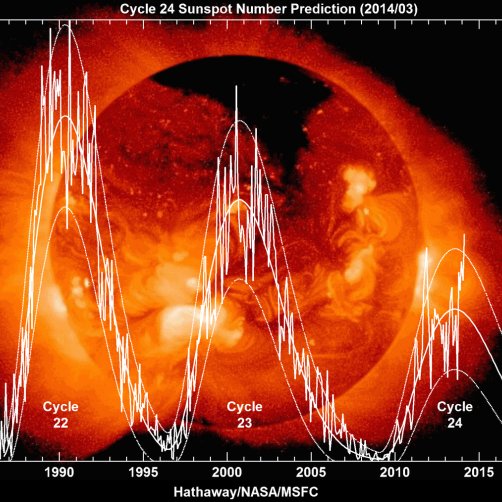| 21 Jun | 03:42 BST | 22 Sep | 19:19 BST |
Solstice will be on June 21st and equinox 22nd of September.
There are two equinoxes every year: one in September and one in March. In September, the Sun crosses the equator from north to south.
There are two solstices every year: one in June and one in December. The June solstice marks the longest day north of the equator and the shortest day in the south.
Here’s how reaching the highest point of the sun (the June solstice) affects solar panels:
Effect on Solar Panels
The June solstice marks the day when the sun reaches its highest point in the sky in the Northern Hemisphere. This is incredibly beneficial for solar panels in this region for several reasons:
- Increased Irradiance: With the sun higher in the sky, its rays travel through less of the Earth’s atmosphere to reach the panels. This results in higher solar irradiance (the power per unit area received from the sun), meaning more energy is available for the panels to convert into electricity.
- Longer Daylight Hours: As you correctly noted, the June solstice marks the longest day of the year north of the equator. More hours of sunlight directly translate to more hours of electricity generation for solar panels.
- Optimal Angle: For fixed-tilt solar panels, the sun’s higher position means that a flatter angle (closer to horizontal) might be more optimal for capturing the most direct sunlight around the solstice, depending on your latitude. We’ll delve into this more below.
When is Peak Production?
For solar panels in the Northern Hemisphere, peak production generally occurs around the summer solstice (June 21st). This is because of the combination of the longest daylight hours and the highest solar intensity. While the exact peak might vary slightly due to local weather conditions (e.g., cloudy days), the period around the solstice is when you can expect the maximum daily energy output from your solar array.
What Angle Should the Panels Be?
Determining the ideal angle for solar panels depends on several factors, including your latitude, whether the panels are fixed or have tracking capabilities, and your primary goal (e.g., maximizing annual production vs. maximizing summer production).
- For Fixed-Tilt Panels Maximising Annual Production: A common rule of thumb for fixed-tilt panels aiming to maximize year-round production is to set the panel tilt angle roughly equal to your latitude. For example, if you are in Basingstoke, England, which is approximately at 51.26∘ N latitude, an angle of around 51∘ would be a good starting point for annual optimization.
- For Fixed-Tilt Panels Maximising Summer Production (around the Solstice): To maximize power output specifically during the summer solstice, you would generally want to reduce the tilt angle. A common recommendation for summer optimization is to subtract 15∘ from your latitude. So, for Basingstoke, it would be approximately 51.26∘−15∘=36.26∘. This flatter angle allows the panels to be more perpendicular to the higher-angle sun rays.
- For Fixed-Tilt Panels Maximising Winter Production: Conversely, to maximize winter production, you would add 15∘ to your latitude.
- For Tracking Systems: If you have a solar tracking system (single-axis or dual-axis), the panels will automatically adjust their angle throughout the day and year to follow the sun’s path, thereby maximising direct sunlight capture and energy production at all times. This is the most efficient method but can also be the most expensive.
Given that we are using Basingstoke, England (51.26∘ N latitude), and the highest point of the sun on June 21st, if you were to adjust your panels for peak summer performance, an angle closer to 36∘ would be beneficial for that period. However, most residential solar installations use a fixed tilt optimised for annual production. We Do not recommend this for all installations due to performance requirements.
How Many Sun Hours Are There?
“Sun hours” (more accurately, “peak sun hours” or “solar insolation”) refer to the equivalent number of hours per day when solar irradiance averages 1000 watts per square meter (1 kW/m$^2$). It’s a way to quantify the total amount of solar energy a location receives over a day.
For Basingstoke, UK, the number of peak sun hours varies significantly throughout the year.
- Around the June Solstice (Summer): In June, Basingstoke experiences its longest daylight hours and highest solar intensity. You can expect to see approximately 4-6 peak sun hours per day during this period. This number accounts for the actual sun path and typical weather conditions, not just the physical duration of daylight. The Day light hours are 16.38 hours on the 21st
- Around the December Solstice (Winter): In contrast, during December, Basingstoke will have significantly fewer peak sun hours, often in the range of 0.5-1.5 peak sun hours per day.
To get the most accurate local data for solar insolation, you would typically consult solar radiation maps or resources like PVWatts Calculator (for the USA, but similar data exists for the UK) or local meteorological data providers. These resources factor in historical weather patterns and cloud cover, which greatly influence actual solar panel output.
In summary, the June solstice is the prime time for solar panel production in the Northern Hemisphere due to longer days and higher sun angles. Understanding how to angle your panels, even if fixed for annual optimization, can help you appreciate the reasons for peak performance around this time.
Checking your performance.
If you know how much solar you have installed, which is shown as KWp you would multiply this by 6 and then take away 35% for your roof installation. Having a a fixed tilt optimised for annual production means that you do not get peak production in winter or summer. For the most part we would not recommend this for a savings or off grid installation and they should be optimised to winter.

No responses yet